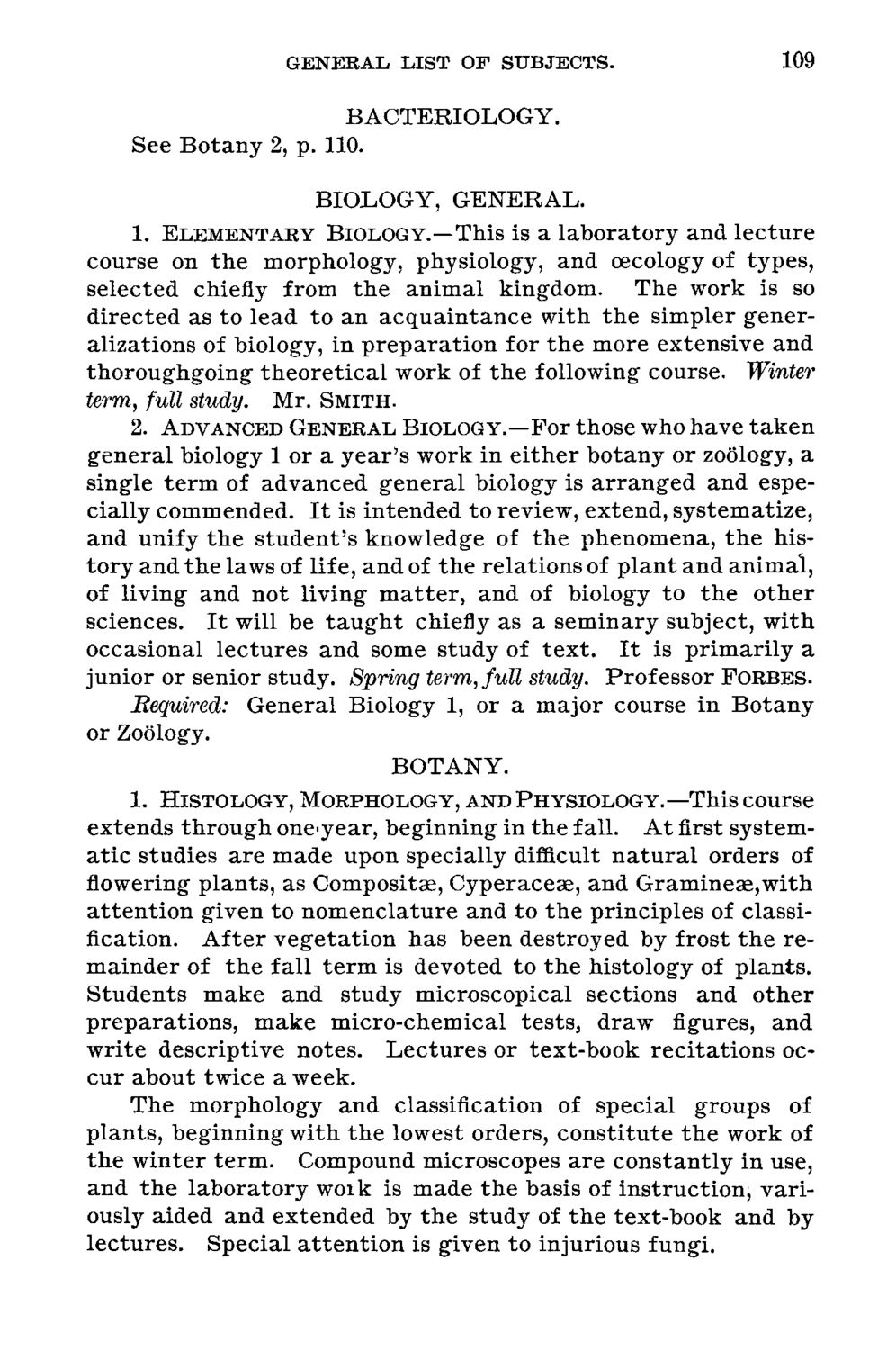| |
| |
Caption: Course Catalog - 1894-1895
This is a reduced-resolution page image for fast online browsing.

EXTRACTED TEXT FROM PAGE:
GENERAL LIST OF SUBJECTS. 109 BACTERIOLOGY. See Botany 2, p. 110. BIOLOGY, GENERAL. 1. ELEMENTARY BIOLOGY.—This is a laboratory and lecture course on the morphology, physiology, and oecology of types, selected chiefly from the animal kingdom. The work is so directed as to lead to an acquaintance with the simpler generalizations of biology, in preparation for the more extensive and thoroughgoing theoretical work of the following course. Winter term, full study. Mr. SMITH. 2. ADVANCED GENERAL BIOLOGY.—For those who have taken general biology 1 or a year's work in either botany or zoology, a single term of advanced general biology is arranged and especially commended. It is intended to review, extend, systematize, and unify the student's knowledge of the phenomena, the history and the laws of life, and of the relations of plant and animal, of living and not living matter, and of biology to the other sciences. It will be taught chiefly as a seminary subject, with occasional lectures and some study of text. It is primarily a junior or senior study. Spring term, full study. Professor FORBES. Required: General Biology 1, or a major course in Botany or Zoology. BOTANY. 1. HISTOLOGY, MORPHOLOGY, AND PHYSIOLOGY.—This course extends through one'year, beginning in the fall. At first systematic studies are made upon specially difficult natural orders of flowering plants, as Compositas, Cyperacese, and Graminea?,with attention given to nomenclature and to the principles of classification. After vegetation has been destroyed by frost the remainder of the fall term is devoted to the histology of plants. Students make and study microscopical sections and other preparations, make micro-chemical tests, draw figures, and write descriptive notes. Lectures or text-book recitations occur about twice a week. The morphology and classification of special groups of plants, beginning with the lowest orders, constitute the work of the winter term. Compound microscopes are constantly in use, and the laboratory woik is made the basis of instruction, variously aided and extended by the study of the text-book and by lectures. Special attention is given to injurious fungi.
| |